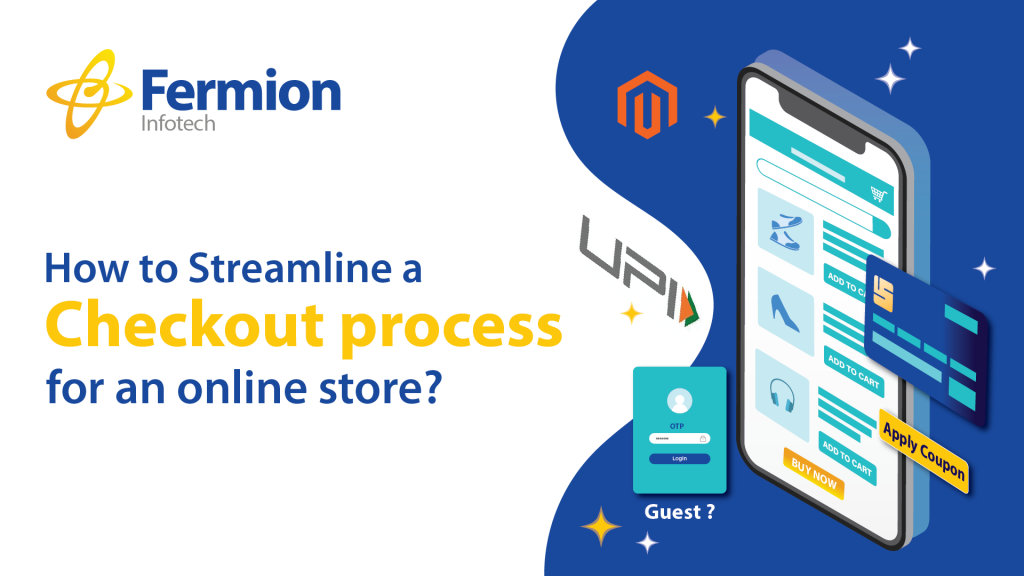
The checkout process is a critical aspect of any online store because it directly impacts the overall user experience and can significantly influence a customer’s decision to complete a purchase.
A seamless checkout process can lead to higher conversion rates and customer satisfaction. Streamlining a checkout process can have some major benefits:
- Mobile Shopping: With the rise of mobile shopping, it’s essential to have a checkout process that is mobile-responsive and easy to navigate on smaller screens.
- Competitive Advantage: Customers prefer an online store that offers a hassle-free and efficient checkout process over one that is complicated and time-consuming.
- Customer Loyalty and Retention: Satisfied customers are more likely to return for future purchases and may become brand advocates who promote your store to others.
- Data Collection and Analysis: Analyzing the data collected in the checkout process can help you identify areas for improvement, personalize the shopping experience, and optimize your marketing strategies.
- International Sales: If you’re selling globally, an optimized checkout process becomes even more critical to attract consumers internationally.
Having a checkout process designed for a particular project is curated according to the client’s requirement. Making it seamless requires skill and an experienced team to carry out the tasks without glitches.
Curating a process which is user-friendly can be done in many ways, and there are open sources available to makeshift the process. But to design a flow which is smooth can be followed by such measure.
- Let’s look at Magento, we classify Magento as “platform-based architecture,” meaning you receive a complete ecommerce platform with a tightly integrated backend and frontend and many features out-of-the-box.
- On the flip side, headless architecture utilizes the Magento backend as a content management system (CMS). The frontend remains separate to allow for deep customization without limitations set by the platform.
- This helps in removing the unused JS and CSS files, avoids complications in customizations, and improves speed to make the process seamless.
Here are few tried and tested steps to follow for a seamless checkout process:
1. Create a Microservice for checkout.
- Keep the checkout process separated from the rest of your eCommerce application.
- Keeping the checkout separate from browsing traffic helps in managing the performance of the checkout.
- To have secure architecture make use of the latest technologies.
2. Make the checkout front-end headless for easy customizations in the future.
3. Provide Guest checkout option.
4. Simplify account creation.
- Provide option of OTP login / registration.
- Go for minimum customer details for registration.
- Make social media login option as one tap option.
- Make sure it does not break the checkout flow.
5. The UX for taking the data from customers should be user-friendly.
- Alignment of fields for address is very important.
- Auto-populate, when possible. e.g., pin code can auto-populate city / state.
6. Integrate secure payment gateways, UPI is a good option for making transactions.
7. Keep the checkout steps as minimal as possible.
- Reduce the number of clicks a user requires to place the order.
- Make user beneficiaries highlighted like discounts, items, price, total, etc.
8. Avoid hidden costs / surprises on checkout.
- If shipping or Tax charges are applicable, they should be clearly communicated.
- Instead give recommendations of the order purchased on the shipping page.
9. Give coupons with one click apply.
- Give standard coupons for easy application.
- Coupons can be based on different items in cart.
10. Provide an interminable Shopping cart allowing customer to see previous cart items.
11. Give alerts if any offer is applied on the abandoned shopping cart to re-engage the users.
12. Order Confirmation page is a big space for cross-sell and upsell. Use it wisely for recommendations.
13. Analytics:
- One of the important aspects of monitoring and checking the process.
- Keep updating the checkout process for maximum conversions.
Additionally, one can customize the checkout process by various configurations depending on the requirements needed for the company. If you are not familiar with coding or customization in Magento, consider seeking assistance from Magento developers or agencies with expertise in Magento customization.
Here are few additions to keep in mind while doing so:
- Optimize Website Speed: Ensure your website loads quickly to reduce the time it takes for customers to navigate to the checkout page. Slow-loading pages can lead to cart abandonment.
- Clear and Simple Design: Keep the checkout page clean, uncluttered, and easy to navigate. Use a simple layout with clear headings and labels for each step of the checkout process.
- Collect only the necessary information: Don’t ask for more information than you need.
- Progress Indicators: Display a progress bar or step indicators, so customers know how many steps are involved in the checkout process and where they currently are.
- Autofill and Autocomplete: Use autofill and autocomplete features to automatically populate fields like shipping and billing addresses, making it quicker for customers to complete the form.
- One-Page Checkout: Consider implementing a one-page checkout process that allows customers to review and enter all necessary information on a single page, reducing the number of clicks and load times.
- Trust Signals: Display trust signals such as security badges, SSL certificates, and customer reviews to build confidence in your checkout process and website security.
- Order Summary: Provide a clear and concise order summary before the final purchase, showing the products, quantities, prices, and any discounts applied.
- Recover Abandoned Carts: Implement strategies to recover abandoned carts, such as sending follow-up emails with a gentle reminder or offering incentives like discounts or free shipping.
- Post-Purchase Support: Offer excellent post-purchase support, including order tracking, delivery updates, and easy returns, to build customer trust and loyalty.
- Regular Testing and Optimization: Continuously monitor and analyze your checkout process to identify areas for improvement. A/B testing different checkout flows and elements can help you optimize for better results.
- Mobile Responsiveness: Ensure your checkout process is optimized for mobile devices as well. Many customers shop on their smartphones, and a mobile-friendly checkout process is essential.
- Split the process for mobile/small screens: Split the checkout process into separate screens, have clear pages for navigating the information in easy steps.
Apply these few things and your checkout process will be smooth and seamless. It is important to have the best user experience and a checkout process with accuracy will help you achieve it. If possible, having an experienced team at hand with the required skills, makes it easy to get the ideas working.
It is always best to get in touch with people who know the process and their services better.

